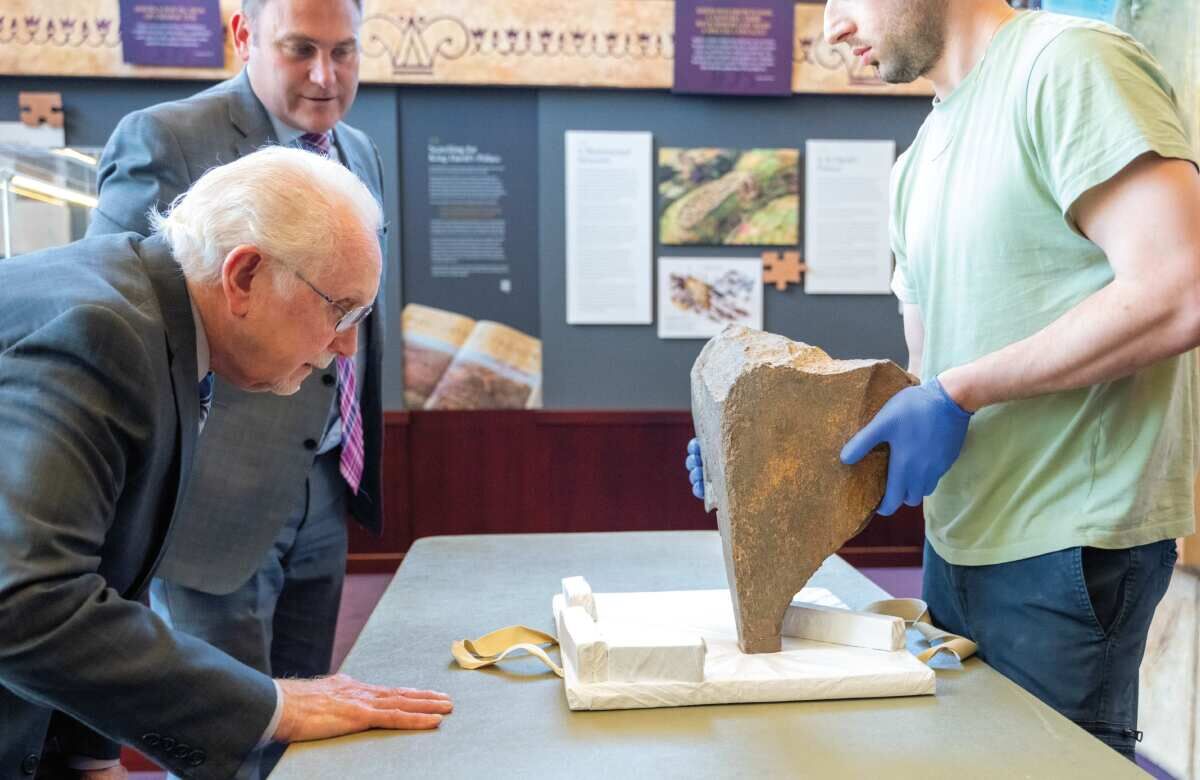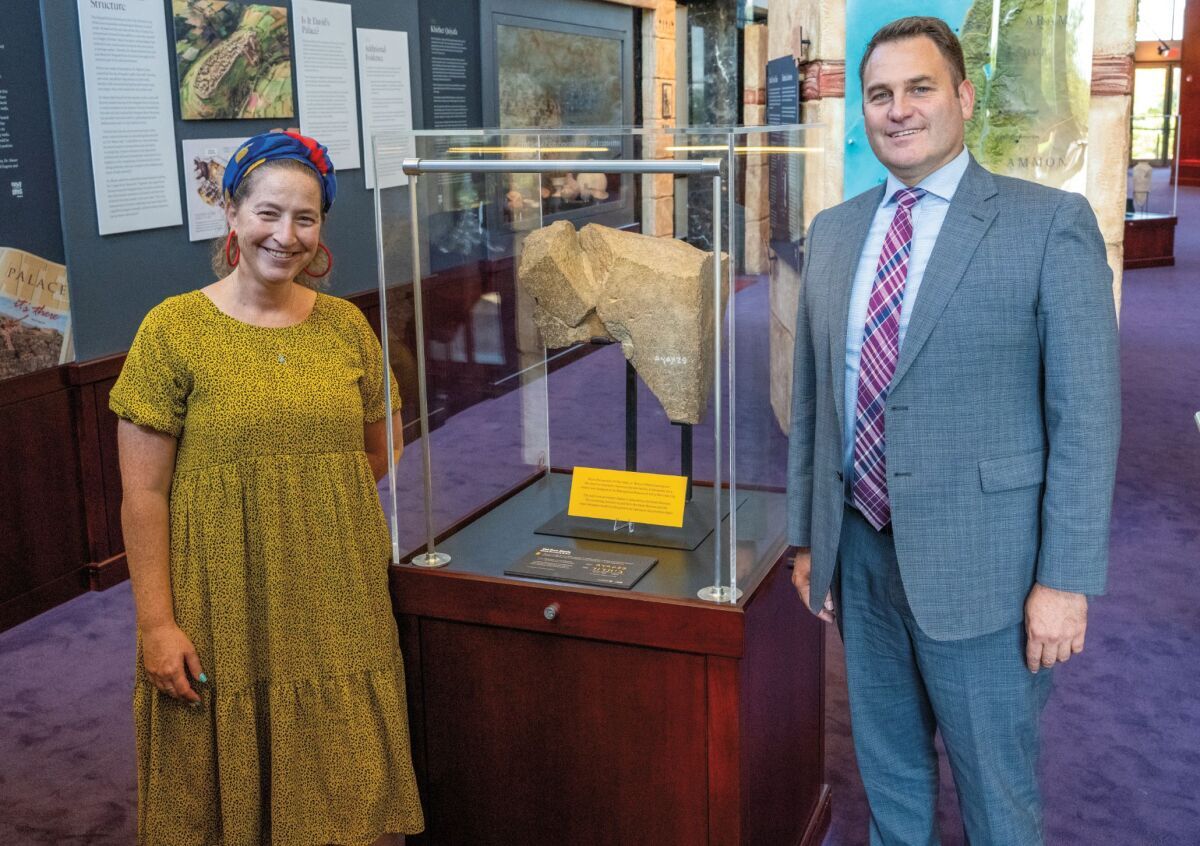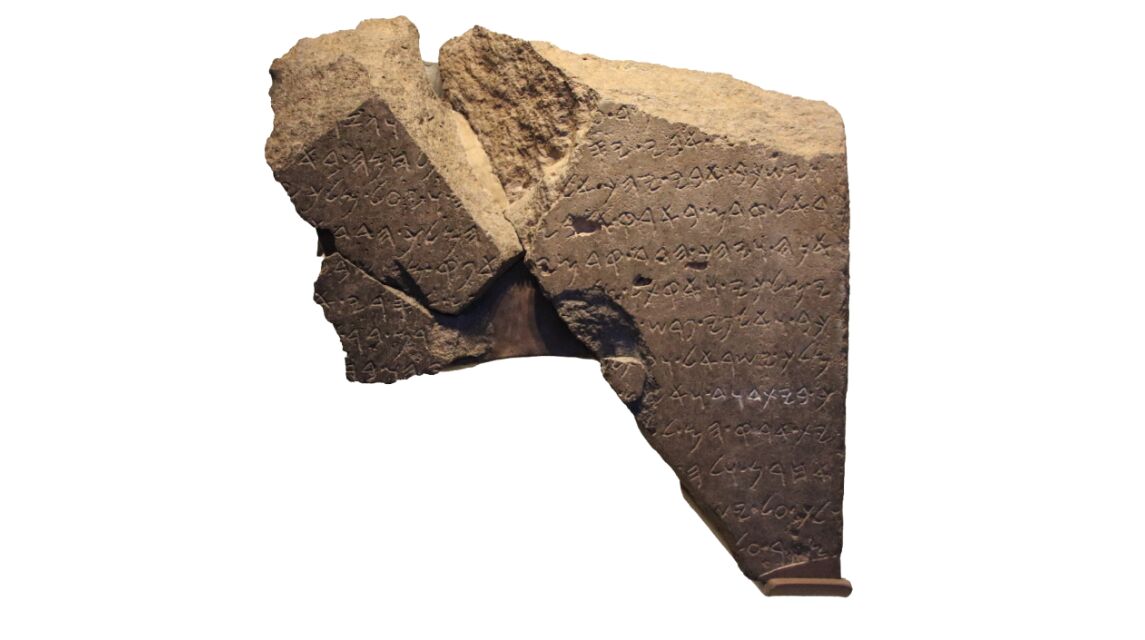The Armstrong Institute of Biblical Archaeology has participated in some thrilling archaeological adventures in Israel over the past 56 years. We were there for the massive Temple Mount (Ophel) excavations between the 1960s and 1970s. We were there for the discovery of King David’s palace and Nehemiah’s Wall from 2006 to 2008. This summer, amid the ongoing war, our excavation on the Ophel (our seventh at this site) was one of only a handful of excavations conducted across the country.
It has been an honor and privilege to support the State of Israel all these years. We have loved working alongside some of the nation’s great people and institutions, including the late Dr. Eilat Mazar, Hebrew University, the Israel Antiquities Authority, the City of David and the Israel Museum. After all these years, and plenty of challenges and grueling work, our love for Israel and its biblical history and archaeology has only grown stronger. We believe the job of sharing Israel’s biblical history has never been more important than it is right now.
On September 17, something truly wonderful happened at our “Kingdom of David and Solomon Discovered” exhibit in Edmond, Oklahoma. In fact, it was historic—at least for us. This was the day we installed the Tel Dan Stele, effectively completing this important exhibition. (We displayed a replica stele in the exhibit prior to the installation of the original.)
The Tel Dan Stele—or as I prefer to call it, the “house of David” inscription—is one of Israel’s most important artifacts. I believe it is one of the most important archaeological discoveries ever made, and one of humanity’s most important ancient treasures.
The inscription was made by King Hazael of Syria in the mid-ninth century b.c.e. This king had recently led his Aramean forces into battle against the allied forces of Jehoram, king of Israel, and Ahaziah, king of Judah (2 Kings 9). Hazael’s campaign was successful, and he boasted about his military victory on a basalt victory stele that he set up as a monument in the northern Israelite city of Dan. On the ninth line of the stele, this is recorded: “[I killed Jeho]ram son of [Ahab] king of Israel, and I killed [Ahaz]yahu son of [Joram kin]g of the house of David. …”
This expression, “house of David,” is used 26 times in the biblical text. Discovered in 1993, the Tel Dan Stele provided the first conclusive archaeological evidence of King David’s existence as a true historical figure. Beyond that, it proved that he was the head of a royal dynasty—just as the Bible describes. It showed that his dynasty was so well known that a Syrian king—living more than 150 years after David—still referred to that line of kings as belonging to David’s dynasty.
This artifact is uniquely special because of how powerfully it complements the biblical text, and especially the history of David, Solomon and the kingdom of Israel. The Hebrew Bible, which records the riveting, detailed history of biblical Israel, is central to the origins and identity of Western civilization. So many of our institutions, beliefs and traditions, huge parts of our culture and religion, our justice system, our Judeo-Christian values, are rooted in the Hebrew Bible. This is one reason the “house of David” inscription is crucial for Western civilization: Archaeology establishes the credibility and authority of the text that is at the core of our identity!

This priceless piece of ancient history has been to America only once before: In 2014, it was briefly exhibited at the Metropolitan Museum of Art in New York City. Armstrong Auditorium and the Armstrong Institute of Biblical Archaeology are honored and enormously grateful to display this item, and to share it with the people of Oklahoma and beyond.
First, we are thankful to the State of Israel and its wonderful people. We understand the importance of this precious artifact to your history, and we are honored to share it with those who visit us. We are also grateful to the Israel Antiquities Authority, to its director, Eli Eskosido, and especially to Dr. Orit Shamir, head of international exhibitions. Bringing an object this important to America was a long and somewhat precarious journey, and we couldn’t have navigated it without Orit’s counsel.
We are grateful to Dinesh D’Souza, the award-winning author, filmmaker and podcaster, who joined us for the opening event celebrating the stele’s arrival and delivered a brilliant keynote address. We have reprinted Mr. D’Souza’s address in this issue (see “The Message of the Tel Dan Stele”). Be sure to read it. It explores the importance of the stele in a profound and compelling way.
Finally, we are grateful to our friends at the Israel Museum of Jerusalem, one of the finest museums in Israel, where the stele is usually on display. Thank you for sharing your most important artifact with us. We are especially thankful to Dr. Haim Gitler, chief curator of archaeology at the museum; Suzanne Landau, the museum director; and to our friend Pirchia Eyall, curator of Iron Age and Persian Period archaeology, who was instrumental in making this loan happen and delivered the artifact to Armstrong Auditorium.
I watched Pirchia install the “house of David” inscription in its cabinet in Armstrong Auditorium. Seeing it on display against the backdrop of the larger exhibit about David and Solomon, I couldn’t help but think about the late Dr. Eilat Mazar, and even her grandfather, Prof. Benjamin Mazar, and all our history together. Dr. Mazar spent most of her professional life searching for King David. I think she would have been thrilled with our exhibit—which features her excavations and includes a lot of her research—and so excited to see the stele with us in Oklahoma.
Dr. Mazar is no longer with us, but it is important to recognize her place in our exhibit and in our archaeological work. This is the greatest biblical artifact in the world, and I believe Dr. Mazar deserves some of the credit for it being displayed in our exhibit.
The inscription on this stele brings to mind a remark Eilat made often: “We must let the stones speak.” I heard her make this statement countless times. She used it in interviews and in all her tours of the Ophel and the City of David. In a way, it perfectly embodies Dr. Mazar’s approach to archaeology. (This phrase is so etched on our minds that we named our magazine and podcast Let the Stones Speak.)
What does it mean? Essentially, it means listen to the science, which includes ancient texts. Archaeology is the science (and art) of excavating history—ancient walls and buildings, pottery and vessels, inscriptions and writings, coins, seal impressions, religious objects and a host of other items. Almost every object found will tell us something about the ancient past. When several objects from the same period are found together, the message can be clearer and more complete. Letting the stones speak means listening objectively to the message they tell.

For Dr. Mazar, letting the stones speak included using the biblical text, which records much of the history of people she was resurrecting through her archaeology. When the documented biblical history harmonizes with the archaeology—the story told by the stones—then the message could be considered accurate and trustworthy. Often, very little interpretation was needed.
There is no better example of archaeology harmonizing with the biblical text than the “house of David” inscription. The text inscribed on the stone slab is literally the same as the text written in 26 verses in the Hebrew Bible.
The Tel Dan Stele is a perfect example of a stone that speaks!
And what a message it has. King David was real. The kingdom of Israel was real. The dynasty of David was real. This discovery, then, points to the reliability of the Bible as a historical text.
This lesson about the veracity of the Hebrew Bible has never been more important to Israel, or to America and the West. Even now, Israel is engaged in war with an enemy who wants nothing less than to vanquish the Jewish state and the Jewish people. And these terrorists want to take their war beyond Israel.
Sadly, many today have forgotten Israel’s history. They have forgotten about its deep connection to Jerusalem and the Holy Land, to David, Solomon and the Hebrew prophets. They have forgotten about the Bible’s role in Western civilization. This is why our exhibit, and the “house of David” inscription, is so crucial. It reminds us of this history. And when you understand and appreciate this history, you understand why Israel must defend itself, and how, as it defends itself, it is defending the Hebrew Bible and even Western civilization.
Dr. Mazar understood this well. “If you don’t understand our history, you won’t be willing and prepared to defend the nation, our people and culture,” she said. “This history unites our people.”
The Armstrong Institute of Biblical Archaeology is proud to exhibit the beautiful history of the Jewish people and the State of Israel. The “house of David” inscription will help us do this more effectively. We look forward to many future projects in Jerusalem and Israel, and will remain fervent in our support and love of the Jewish state and her brave people.
Finally, if you can, I encourage you to visit our exhibit, “Kingdom of David and Solomon Discovered,” at Armstrong Auditorium in Edmond, Oklahoma. The “house of David” inscription will be on display until November 30. To learn more about the exhibit, click here.

